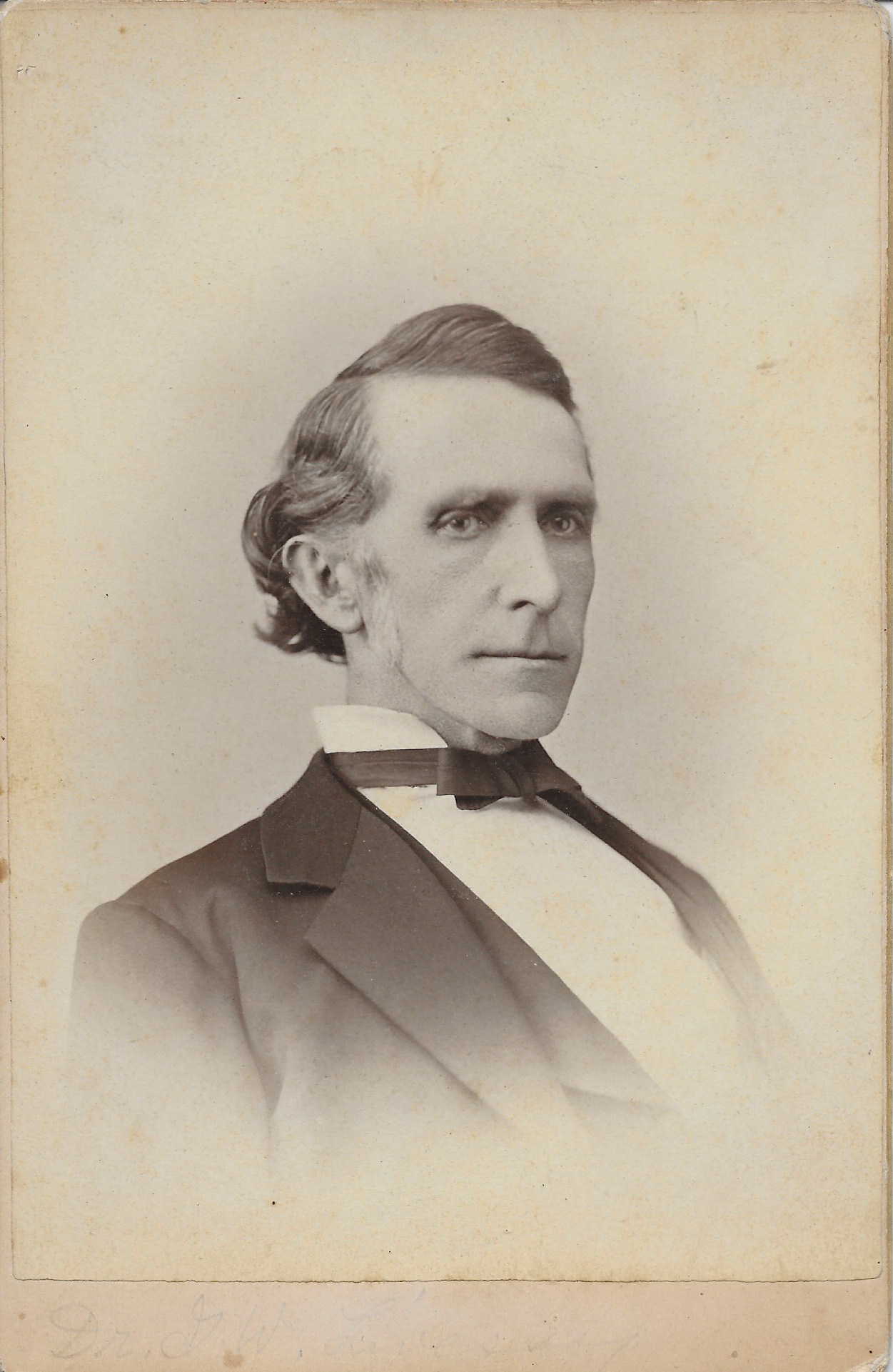George Washington Livesay was born on December 16, 1824, in Lewisburg, Virginia (present-day West Virginia), to George Livesay and Mary Switzer. His father was a miller and blacksmith who owned at least 5 slaves. He graduated from Washington College (now Washington and Lee University) in 1846 and earned his medical degree from the University of Virginia two years later. He received additional training from New York University School of Medicine, graduating in 1849.
Livesay settled in Gallipolis, Ohio, soon afterward and began working as a physician. He married Elizabeth Grace Lang there on October 4, 1854, and they had at least three children together: Grace H., born around 1856; Theodore Murdock, born around 1858; and Mary E., born around 1863. Livesay was active in the local Episcopal Church and served as a lay delegate at the Diocese of Ohio’s annual convention in 1861. His medical practice in Gallipolis thrived; he owned $4,000 in property in 1860 and more than $25,000 in 1870.
During the Civil War, Union officials established a military hospital in Gallipolis, and Livesay became an acting assistant surgeon there in February 1862. Within a week, he was overseeing twenty or thirty hospital patients, treating cases of typhoid fever and pneumonia. Livesay also served as an examining surgeon, helping determine if young men were eligible for the draft and whether wounded soldiers were entitled to a pension. In September 1862, a local writer observed that Livesay’s medical practice “was never before so extensive.” In 1864, he helped organize a “Grand Festival” to benefit the town’s military families.
After the war, he devoted his attention to a series of infrastructure projects. He served on the county’s Central Railroad Committee in the late 1860s and helped raise money for local railway lines. In 1867, he attended an inter-state railroad convention in Sulphur Springs, West Virginia, hoping to establish a “great commercial highway between the waters of Chesapeake Bay and the Ohio river.” Two years later, a smallpox epidemic struck Gallipolis, and the city council hired Livesay and two other doctors to vaccinate everyone in town.
Around 1870, Livesay moved to Chicago, Illinois, where he helped operate a drug store. The Great Chicago Fire of 1871, however, destroyed the store and prompted him to return to Gallipolis. He moved to Ironton, Ohio, in 1873 and remained there for the rest of his life. His wife died on May 11, 1890, and he passed away in Ironton on August 4, 1900, after “an illness of some weeks.” A local writer eulogized him as a “gentleman of the highest type—generous, courteous, and intellectual—and by his death Ironton loses one of her most honored residents.” He was buried in Woodland Cemetery in Ironton two days later.
Image: George W. Livesay (Courtesy of the Family of Pat Handley Garton [1912-2003])
| Name: | Livesay, George Washington | |||||||||||||||
| Alternative names: | ||||||||||||||||
| Roles: |
| |||||||||||||||
| Gender: | M | |||||||||||||||
| Race: | White | |||||||||||||||
| Regiment/Ship: |
| |||||||||||||||
| Branch of service: | ||||||||||||||||
| Residence at UVA: | Lewisburg, WV | |||||||||||||||
| UVA Begin Year: | 1847 | |||||||||||||||
| UVA End Year: | 1849 | |||||||||||||||
| Residence at enlistment: | ||||||||||||||||
| Rank In: | ||||||||||||||||
| Rank Out: | ||||||||||||||||
| Highest rank achieved: | ||||||||||||||||
| Birth date: | 1824-12-16 | |||||||||||||||
| Birth date certainty: | Certain | |||||||||||||||
| Birth place: | Lewisburg, WV | |||||||||||||||
| Death date: | 1900-08-04 | |||||||||||||||
| Death place: | Ironton, OH | |||||||||||||||
| Causes of death: | ||||||||||||||||
| Occupations: | Doctor | |||||||||||||||
| Relationships: |
|
Virginia Livesay Graves, The Livesays of Greenbrier County, W. Virginia (n.p: n.d); 1840, 1850, 1860, 1870, 1880, and 1900 U.S. Federal Censuses, available from http://www.ancestry.com; Catalogue of the Officers and Alumni of Washington and Lee, Lexington, Virginia, 1749-1888 (Baltimore: John Murphy & Co., 1888); Session 24 of the Faculty Minutes, October 1, 1847-June 29, 1848, “Jefferson’s University: The Early Life” Project; Catalogue of the University of Virginia: Session of 1847-’48 (Richmond: H. K. Ellyson, 1848); General Alumni Catalogue of New York University, 1833-1907: Medical Alumni (New York: General Alumni Society, 1908); Journal of the Proceedings of the Forty-Fourth Convention of the Protestant Episcopal Church in the Diocese of Ohio (Columbus: Richard Nevins, 1861); William H. Trimble to C. P. Buckingham, February 15, 1862, “Civil War Guide Project,” Ohio History Connection, available from http://www.resources.ohiohistory.org; The Gallipolis Journal, September 4, 1862, January 14, 1864, July 25, 1867, September 26, 1867, February 4, 1869; Message from the President of the United States to the Two Houses of Congress, at the Commencement of the First Session of the Thirty-Ninth Congress, with the Reports of the Heads of Departments, ed. Ben Perley Poore (Washington: Government Printing Office, 1866); Ironton Register, August 9, 1900.





